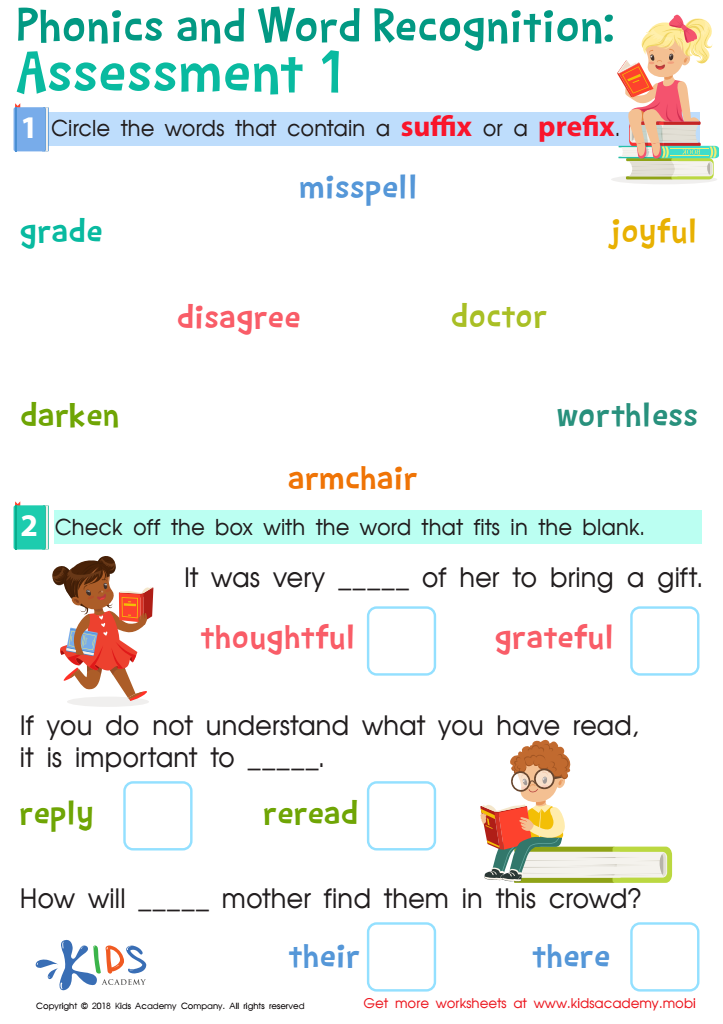Elementary Phonics worksheets activities for Ages 8-9
1 filtered results
-
From - To


Phonics and Word Recognition: Assessment 1 Worksheet
Elementary Phonics worksheets activities play a crucial role in foundational literacy education. These engaging and interactive tools serve multiple purposes in the journey of young learners toward reading fluency and comprehension. By integrating Elementary Phonics worksheets activities into the curriculum, educators can significantly enhance the learning experience for students, making the exploration of sounds, letters, and words both enjoyable and effective.
Firstly, Elementary Phonics worksheets activities are designed to reinforce the relationship between letters and sounds, a cornerstone of reading. Through repetitive practice and a variety of exercises, children become familiar with phonemes (the smallest units of sound) and how they combine to form words. This essential understanding is vital for decoding new words and contributes greatly to reading proficiency.
Moreover, these activities cater to diverse learning styles. Whether a child learns best through visual, auditory, or kinesthetic means, worksheets can be tailored to meet their needs. For instance, some worksheets focus on visual recognition of phonetic patterns, while others might involve matching exercises or fill-in-the-blanks, engaging different senses and reinforcing learning through multiple channels.
Elementary Phonics worksheets activities also encourage independent learning. With clear instructions and self-explanatory tasks, children can work through these activities at their own pace, fostering a sense of achievement and autonomy in their learning journey. This independence not only builds confidence but also allows for personalized learning experiences, as students can spend more time on areas where they need more practice.
Furthermore, these worksheets provide immediate feedback, which is crucial for early learners. Whether through self-correction or teacher evaluation, students can quickly identify mistakes and learn from them, promoting a growth mindset and resilience in learning.
In conclusion, Elementary Phonics worksheets activities are an indispensable tool in the literacy toolkit of young learners. By promoting understanding of phonetic principles, accommodating diverse learning styles, encouraging independence, and providing immediate feedback, these activities lay a solid foundation for reading success and a lifelong love for learning.
 Assign to the classroom
Assign to the classroom












